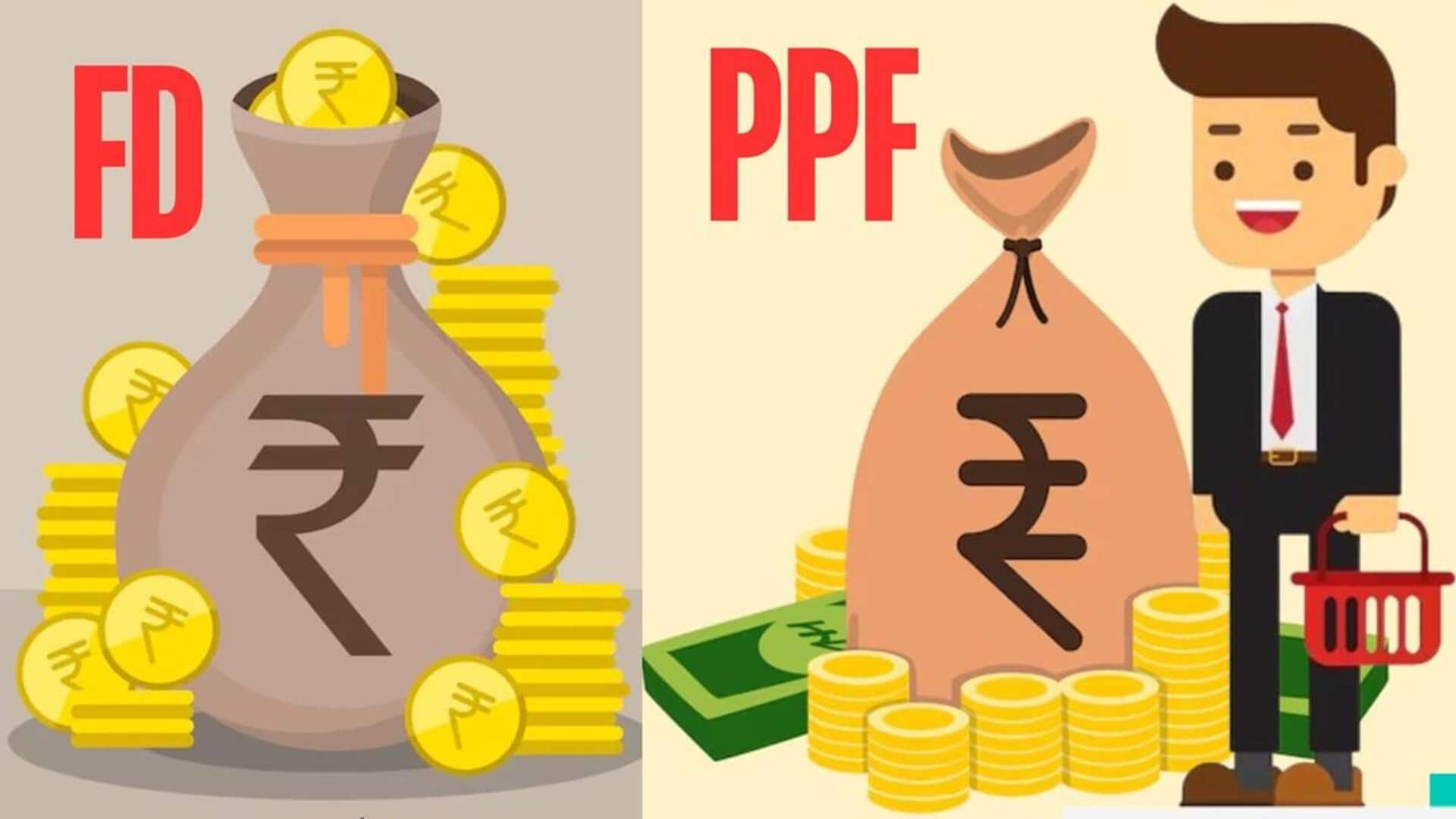
Fixed Deposits v/s Public Provident Fund: Which is better?
What's the story
Fixed deposits (FDs) and public provident fund (PPF) are two popular investment options in India. While both offer safety and decent returns, they serve different financial goals. Knowing their differences can help you make better investment decisions. Here's a look at the major differences between FDs and PPFs, to help you choose the right option for your financial goals.
#1
Interest rates and returns
FDs usually offer higher interest rates than savings accounts, ranging from 5% to 7% per annum, depending on the bank and tenure. PPFs offer a government-backed interest rate, which is currently around 7.1% per annum, compounded annually. However, the interest from PPF accounts is tax-free, while FD interest is taxable as per the investor's income tax slab.
#2
Tenure flexibility
Fixed deposits come with flexible tenures, usually ranging from seven days to 10 years. This allows investors to choose tenures as per their short-term or medium-term needs. Public Provident Fund has a fixed tenure of 15 years but allows partial withdrawals after a lock-in period of six years. This makes PPF less flexible than FDs in terms of access to funds.
#3
Tax implications
Investments in fixed deposits are subject to tax as per the investor's income tax slab. However, banks also deduct TDS on interest earnings above ₹40,000 annually (₹50,000 for senior citizens). Public Provident Fund contributions can go up to ₹1.5 lakh annually under Section 80C of the Income Tax Act, offering tax benefits on the principal amount invested.
#4
Liquidity options
FDs provide liquidity options with premature withdrawal facilities, although they may incur penalties or reduced interest rates if withdrawn before maturity. PPF accounts have limited liquidity since they come with a lock-in period of 15 years but allow partial withdrawals after six years under certain conditions.